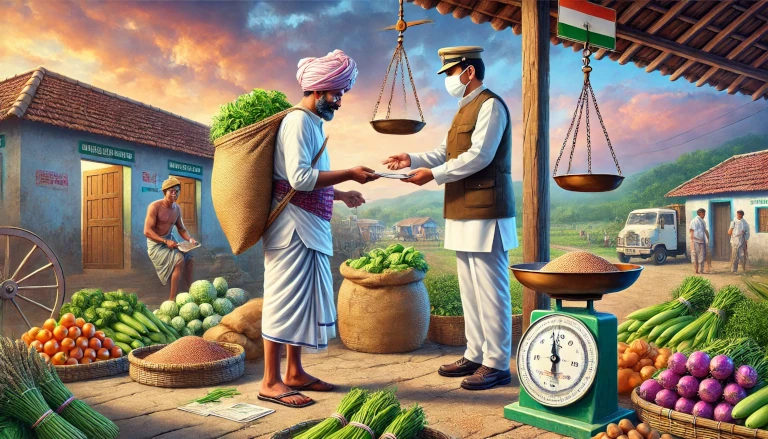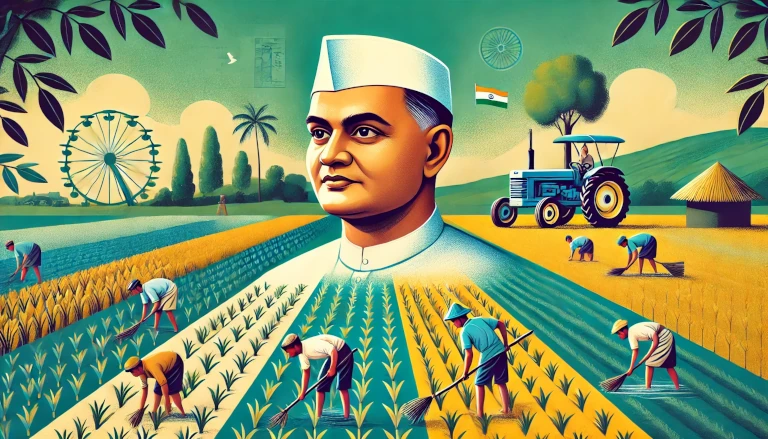The Minimum Support Price (MSP) is a crucial policy in India, designed to protect farmers from price fluctuations and ensure they receive fair compensation for their crops. MSP acts as a safety net, assuring farmers of a minimum price for their produce, regardless of market conditions. This guide delves into what MSP is, its significance in Indian agriculture, how it is determined, the benefits it provides, and the challenges it faces.
What is Minimum Support Price (MSP)? 🏛️
The Minimum Support Price is a government-set price at which it guarantees to purchase certain agricultural products directly from farmers. MSP serves as a protective measure, ensuring that farmers do not suffer financially even if market prices fall below a sustainable level.
Key Objectives of MSP:
- Farmer Income Protection: Ensures farmers are protected from drastic price drops.
- Food Security: Helps stabilize food supply by encouraging crop cultivation.
- Market Stability: Prevents price exploitation by ensuring a baseline price for crops.
Why Was MSP Introduced? 🌱
The MSP system was introduced in the 1960s to address the challenges faced by Indian farmers, particularly due to unpredictable crop prices, rising production costs, and the impact of monsoon-dependent farming. The Green Revolution brought higher agricultural productivity, but fluctuations in market prices threatened farmer incomes. MSP was designed to offer income security to farmers, encouraging them to continue producing essential food grains without fear of financial loss.
How is MSP Determined in India? 📊
The Commission for Agricultural Costs and Prices (CACP) is responsible for recommending MSPs for various crops each season. The CACP takes into account several factors before submitting MSP recommendations to the government, including:
- Cost of Production: Calculating input costs such as seeds, fertilizers, labor, and water.
- Market Prices: Considering current domestic and international market trends.
- Demand and Supply: Balancing the needs of consumers and the supply of essential crops.
- Impact on Consumers and Inflation: Ensuring MSP does not lead to excessive price hikes in the market.
After the CACP submits its recommendations, the Cabinet Committee on Economic Affairs (CCEA) reviews and announces the final MSP for each crop.
Benefits of Minimum Support Price for Farmers 🌾
MSP provides multiple benefits to both farmers and the agricultural sector as a whole, ensuring economic stability, incentivizing production, and supporting rural livelihoods.
Key Benefits:
- Assured Income for Farmers: MSP guarantees a minimum income, reducing the financial risk associated with farming.
- Encouragement to Grow Essential Crops: Higher MSPs for critical crops like wheat and rice encourage farmers to cultivate them, ensuring food security.
- Protection from Exploitation: MSP prevents exploitation by middlemen and traders, offering farmers a fair price.
- Stabilized Market: MSP contributes to price stability in the agricultural market, benefiting both farmers and consumers.
Where Does MSP Apply in India? 🗺️
MSP is announced for 23 major crops across India, including cereals, pulses, oilseeds, and commercial crops. However, the actual enforcement of MSP varies by state, with stronger procurement systems in states like Punjab, Haryana, and Uttar Pradesh, where crops like wheat and rice are primarily purchased by the government.
When is MSP Announced? ⏰
The government announces MSPs for two major agricultural seasons:
- Kharif Season: MSPs are announced in June, covering crops like rice, maize, and pulses planted during the monsoon.
- Rabi Season: MSPs for wheat and other winter crops are announced in October before the planting season begins.
Announcing MSPs before each season helps farmers make informed decisions about which crops to cultivate, based on the minimum price guarantee.
Challenges and Limitations of MSP ⚖️
Despite its significance, MSP faces several challenges in reaching and benefiting all Indian farmers:
1. Limited Reach and Access 🌾
The benefits of MSP are primarily available to farmers in regions with strong procurement systems. Many small and marginal farmers in states with weak procurement infrastructures cannot sell their crops at MSP.
2. Cost Burden on the Government 💸
Purchasing crops at MSP requires significant government expenditure. The cost of procuring, storing, and distributing crops can strain fiscal resources, especially for staple crops with high MSPs.
3. Dependency on a Few Crops 🌽
MSP is largely effective for a few staple crops, leading to over-cultivation of certain water-intensive crops like wheat and rice. This has environmental implications, including water depletion and soil degradation.
4. Market Distortion 📉
Critics argue that MSP distorts the free market by artificially setting prices. This can lead to overproduction, wastage, and an imbalance in crop cultivation, affecting agricultural diversity.
Political Debates Surrounding MSP ⚔️
MSP has been a politically sensitive issue, as it directly impacts the livelihoods of millions of Indian farmers and forms a significant part of rural voting demographics.
Key Political Adversaries:
- Policy Debates on Free Markets: Some policymakers argue that MSP interferes with free-market principles, advocating for a market-driven approach instead.
- Election Influence: MSP hikes are sometimes politically motivated, announced during election years to gain support from the farming community.
- Regional Disparities: States with stronger procurement facilities benefit more from MSP, leading to disparities among states and political tension over agricultural policy.
Financial Implications and Government Spending 💰
The MSP system places a substantial financial burden on the government, as it requires significant funding for procurement, storage, and distribution.
Financial Challenges:
- High Procurement and Storage Costs: Purchasing crops at MSP requires extensive warehousing and logistics infrastructure, adding to the overall costs.
- Public Distribution System (PDS) Subsidy: Crops procured at MSP are often sold at subsidized prices under the PDS, further increasing government spending.
- Fiscal Responsibility: Balancing MSP with other welfare programs remains a challenge due to limited fiscal resources.
The Future of Minimum Support Price 🌞
The Minimum Support Price (MSP) is a fundamental mechanism in Indian agriculture, ensuring that farmers are compensated fairly and encouraging them to cultivate essential crops. While it offers income security and stabilizes the market, MSP faces challenges in terms of limited reach, fiscal strain, and potential environmental impact. Moving forward, reforms that expand MSP access, encourage crop diversification, and improve procurement infrastructure could make MSP more effective, benefiting both farmers and the agricultural economy as a whole.
MSP provides financial protection and stability to Indian farmers, supporting agricultural growth and ensuring fair prices for essential crops. 🌾
For the latest MSP 2024-25, you can visit https://pib.gov.in/PressReleaseIframePage.aspx?PRID=2026698
Discover more from Green Ecosystem - Renewable Energy, Agriculture, and Environmental Sustainability
Subscribe to get the latest posts sent to your email.


